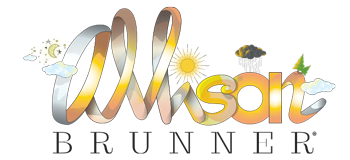EFT Tapping Can Reduce Your Time in Therapy
My mom was scared. Her COVID symptoms persisted, so she was too worried to rest. She coughed and wheezed and was too wiped out to cook the food I’d brought her quarantined at home in Fall 2021.
My gut said anxiety slowed her body’s healing.
I remembered seeing a YouTube video earlier in the week. A nurse helped hospitalized COVID patients ease their fears with a modality called the Emotional Freedom Technique (EFT). I knew the basics of EFT, so I video-chatted with my mom to teach her. Within minutes, she calmed and her chest began to clear. The following day we repeated the protocols, and my mom continued to mend so rapidly she started cleaning her house.
This energy psychology practice involves tapping on eight meridian points on your body while focusing on thoughts and emotions that are causing distress. Similar to acupressure, practitioners explain, it brings balance to the body’s energy system. Several doctors taught patients in the 1970s how to ameliorate stress, fear, and phobias, and feel better quickly by tapping on acupressure points. Among them, Dr. Roger Callahan patented Thought Field Therapy from a set of protocols he created. Later Gary Craig simplified Callahan’s approach and called it EFT.
I practiced EFT with psychotherapy clients moving through heartbreak and loss, anxiety, and fear. A few whom I’d seen for months no longer required treatment after two EFT sessions.
Inspired, I sought formal training and certification as a master practitioner. Yet for more than a year, I rarely offered the modality to clients.
For a decade, I’d spent hundreds of hours and thousands of dollars training in somatic psychotherapies for which I was known and sought out specifically to facilitate. I couldn’t fathom that EFT, a beautifully simple method that took less than a year to learn, could compete with more elaborate and complex approaches to healing.
And frankly, we all look a little weird doing EFT. It feels like you’re doing the hokey pokey sitting down. So I hesitated to ask my clients to participate.
But in the months to come, demand for therapy mounted. And I had a waiting list.
The economy nose-dived and inflation stressed our bank accounts. Clients needed to feel better faster, so I integrated EFT with somatic psychotherapy regularly and was delighted at the results. While most articles on EFT claim more research is needed to understand whether and how tapping therapy works, anecdotal evidence proved it a win. Most of my clients loved it.
Within a few sessions, they released trauma, improved self-esteem, soothed phobias, elevated their mood, and eased anxiety.
A sibling turned terror into excitement about flying on a plane for the first time after we tapped together on Zoom. My partner and I abated irritability while restricting food intake on a cleansing detox. A friend cleared residual trauma after her Eye Movement Desensitization Therapy (EMDR) session when I guided her through the process on video chat.
In fact, several clients likened EFT to EMDR but deemed it gentler.
On its own, EFT proves potent. Combined with other interventions, it’s more powerful.
Thus I exude passion about it.
After completing coursework in EFT for Trauma I now practice Dr. Patricia Carrington’s EFT Choices. It combines the tapping method with believable affirmations, so clients not only decrease discomfort but move through the world feeling more uplifted, optimistic, confident, and empowered.
After a Choices session, my sibling joked, “I couldn’t find the negative emotion anymore even when I tried looking for it!” That’s because the positive emotion is paired with the negative one in Choices and overrides it.
So it makes me fantasize about the possibilities of how EFT can strengthen and empower communities around the world. Look for it soon on my social media accounts as I walk you through very simple sessions to help you like yourself more.

